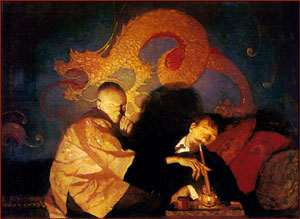I recently read a brilliant, new book (272 pgs) by a RUC / PSNI veteran of 'The Troubles': 'Secret Victory: The Intelligence War That Beat the IRA' by William Matchett and available via:http://www.secretvictory.co.uk/ Plus the usual outlets.
It is worthy of a new thread, especially as the US Army adopted the 'Attack the Network' theme - which was taken from Northern Ireland.
As the title suggests this is about the missing dimension of ‘The Troubles’ in Northern Ireland 1969-1999. The author served for thirty years, mainly in the police’s intelligence department, the Special Branch and then became a police adviser in Afghanistan, Iraq and other places.
For many, notably politicians, especially Provisional Sinn Fein, The Good Friday Agreement 1998 (which led to a peace settlement in 1999) was a successfully negotiated compromise between the paramilitaries, Ulster political parties, the British and Irish governments. The author argues strongly that was not true: The Provisional Irish Republican Army (PIRA) by the early 1990’s ‘had run out of road’ and needed a face-saving exit. Half the IRA was in jail and most of the rest fugitives living in the Irish Republic (pg.8).
The author’s argument is that a rule of law approach endured – and the best weapon in the counter-terrorism armoury was the intelligence war conducted by the Special Branch (SB). Not to neglect the role of the Army, who had primacy over the police for seven years (1969-1976); with 30,000 serving in 1972, dropping to 15,000 in 1998. The police grew from 3,000 to 13,000 in the same period (pg.146) and in 1986 the SB had 640 officers or 5% of the force (pg.206).
The beginning of the end was the PIRA attack on Loughall police station, the PIRA attack was identified – minus many details – and the SAS ambushed them, killing eight hardened killers. PIRA was totally clueless how the SB knew. Attacks would still happen and 85% of mainland attacks were prevented (pg.219).
There is a mass of detail. I would draw attention to him writing 60% of gathered intelligence came from agents (pg. 22), 20% technical, 15% surveillance and 5% routine policing & open sources (pg. 98). Arrests occurred 96% of the time (pg.23) and the specialist uniformed support unit (E4 HMSU) had an impressive record: 99.5% of covert operations confronting armed terrorists resulted in arrests (pg.220). PIRA volunteers knew in a year’s time they would behind bars or dead. The SAS who dominated covert operations along the border between 1986-1992 killed twenty-one of PIRA’s top operators (pg.231) and in 1997 in South Armagh, the heart of ‘bandit country’ a PIRA sniper team were arrested by the SAS and E4 HMSU.
‘Agents were the decisive factor’ and eventually surveillance, armed response and tactical co-ordination were added – a combination that forced PIRA to capitulate (pg.112)
Much has been written on ‘suspect communities’ and today is often applied to Muslim communities in the UK. The author argues what emerged, under PIRA leadership and strategy, were ‘counter-societies’ that harnessed subversion and political militancy to accompany and support terrorism (pg.69-71). The aim was to make Nationalist areas un-policeable and therefore ungovernable.
The criminalization policy, also known as “Ulsterisation”, led to the PIRA recognizing the criminal justice system and having to defend their actions in criminal courts (minus juries) under public scrutiny (pg. 157). Behind the scenes and yet to become public documents were seven reports by senior Security Service authors (pg. 163).
There are chunks of the book which are controversial, the "shoot to kill" episode and the book fades out as peace approached. Perhaps it is too early even today to place more information in the public domain?











Bookmarks